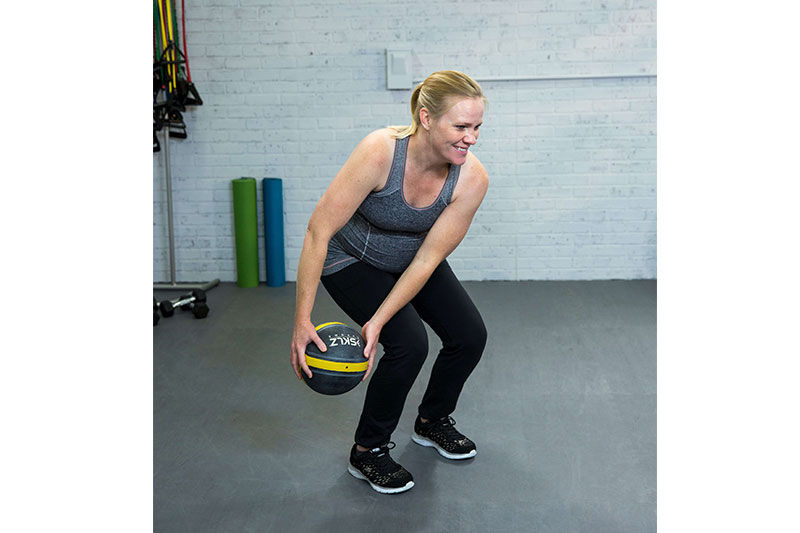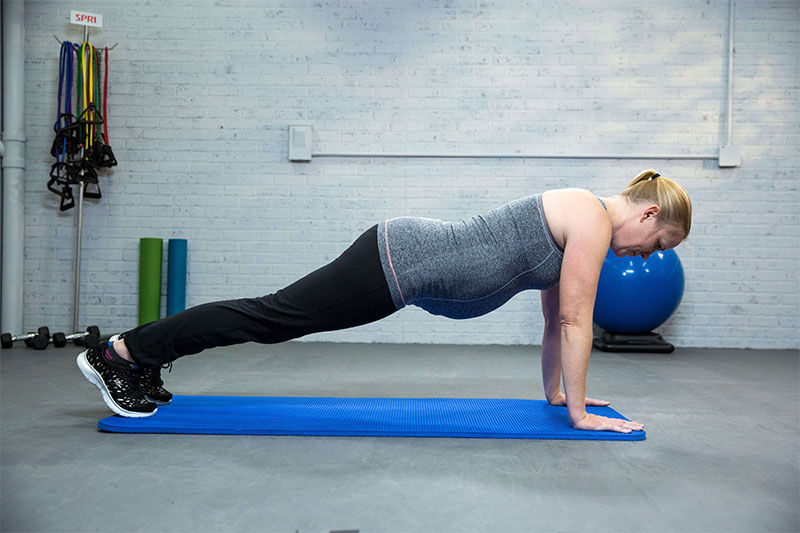Research indicates that prenatal exercise is not only okay, but it is recommended. Even still, myths and misconceptions about physical activity and pregnancy persist in the minds of pregnant women, personal trainers and the general public. One of the biggest points of fear in the world of prenatal fitness is core strengthening exercises.
Some may experience anxiety about hurting the baby or fear damaging a pregnant woman’s core musculature, or they may even ignore the core altogether because of the misconception that it is ineffective during pregnancy. This leads many women to avoid training the abdominals well or with function is mind. This is a big "miss" in a prenatal fitness routine.
Let’s define “core” before we continue. Our abdominal musculature goes far beyond a “six-pack.” Think of your core as a 3-dimensional cylindrical unit, with muscles that run in several directions. These muscles include: the transverse abdominus, obliques, rectus abdominus and erector spinae, with the diaphragm at the top and the pelvic floor at the bottom of the cylinder. This 3-dimensional unit acts as the support for the spine.
With the forward shifting of weight as a baby grows, the strength of a pregnant woman’s core musculature is critical to maintaining a neutral spine, and ultimately, helping to decrease muscle fatigue and pain. Without good trunk strength, the weight of the growing baby can pull the pelvis forward, causing a sway back (lordosis). This prolonged position can lead to a very uncomfortable malalignment in the spine. Increasing core strength during pregnancy will aid in getting the pelvis back into a neutral position. According to the American Congress of Obstetricians and Gynecologists, “…more than 60% of all pregnant women experience low back pain. Strengthening of abdominal and back muscles could minimize this risk”.
3 Safe and Effective Prenatal Core Exercises:
Before beginning any prenatal exercise to build core strength, it is critical to establish abdominal engagement first.
Wood Chop – Functional rotational strength (resistance band required)
- Place one handle on the ground and stand on the band with both feet
- Hold onto the other handle with both hands
- Create tension in the abdominals
- Squat down, with weight in heels and spine neutral
- Stand up and rotate arms out in front of the body, twisting at the ribcage with hips squared off to the front
- Keep knees soft at the top of the movement
Bird Dog – 3-dimensional stability strength (no equipment needed)
- Lower the body onto all fours (hands and knees)
- Create tension in the abdominals
- Extend one arm out in front while the opposite leg extends back (hold for a count of 8-10 seconds and repeat on the other side)
Note: For balance concerns, perform the arm and leg movements separately.
Prone Plank Variations - 3-dimensional stability strength (no equipment needed)
- Start on knees and hands to begin a prone plank (if wrist pain is present, try a forearm plank)
- Create tension in the abdominals
- Hold for a count of 15-30 seconds; rest and repeat
Note: For a greater challenge, perform on the feet for the same amount of time.
The key to getting the maximal benefit of any core exercise during pregnancy is to establish good core contraction before the exercise even begins. If that is not available, the advanced step of performing the exercises could result in a diminished return.
Disclaimer: Before beginning a prenatal exercise routine, speak to your physician about whether it’s safe for you to exercise.




 by
by 












